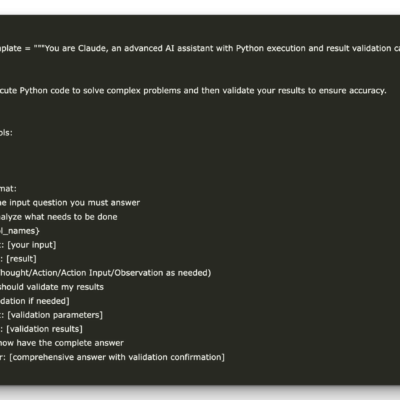1. Introduction to Blockchain
Blockchain technology has revolutionized the digital landscape and sparked change across industries like finance, healthcare, and logistics. Essentially, blockchain is a secure, decentralized database that allows information to be shared in real time without intermediaries. Originally devised for the cryptocurrency Bitcoin, the technology has quickly proven itself as an asset in various sectors.
2. What is Blockchain?
At its core, blockchain is a type of Distributed Ledger Technology (DLT) where data is recorded in blocks linked in chronological order, forming a continuous chain. Each block contains a set of transactions or data entries, which are verified and stored securely. The unique aspect of blockchain is its decentralized nature, meaning no central authority controls the data.
3. How Blockchain Works
Let’s break down blockchain’s functionality into three key elements:
Distributed Ledger: Instead of one central database, blockchain distributes data across multiple nodes (computers) in a network. Every node has a copy of the ledger, ensuring transparency and security.
Consensus Mechanism: Before adding a new block, the nodes must agree on its validity. This agreement process is called a consensus mechanism. There are various consensus mechanisms, such as proof of work (PoW), proof of stake (PoS), and delegated proof of stake (DPoS).
Cryptography: Blockchain uses cryptographic algorithms to secure transactions. Hashing generates a unique identifier for each block, ensuring no data is altered without affecting the entire chain.
4. Key Features of Blockchain
Decentralization: Blockchain is decentralized, meaning no single entity controls the network. Each node on the blockchain is independent, enhancing transparency and reliability.
Transparency: Because all nodes have a record of the transactions, users can see and verify all the information on the blockchain.
Immutability: Once a transaction is recorded on a blockchain, it’s nearly impossible to alter, providing high data integrity and security.
5. Types of Blockchain Networks
Understanding the types of blockchain networks can clarify how different industries use the technology.
Public Blockchain: accessible by anyone, with all data visible to the public. Examples include Bitcoin and Ethereum.
Private Blockchain: Managed by a particular entity, limiting access and editing rights to a group of chosen individuals.
Consortium Blockchain: A mix between public and private, where a group of organizations manages the network.
Hybrid Blockchain: This technology combines the advantages of private and public blockchains, making it perfect for companies that wish to keep sensitive information private while allowing some aspects to be transparent.
6. Blockchain Applications in Various Industries
a. Financial Services
Blockchain has made an undeniable impact on finance, transforming areas like payments, lending, and asset management. Blockchain-based digital currencies, or cryptocurrencies, have risen in popularity, and decentralized finance (DeFi) platforms now allow users to access financial services without traditional banks.
b. Supply Chain Management
Blockchain is ideal for supply chain transparency. From raw materials to finished goods, each step can be recorded on the blockchain, ensuring traceability and accountability.
c. Healthcare
In healthcare, blockchain can securely store medical records, enhancing patient data security and ensuring information remains confidential and accurate.
d. Real Estate
Real estate transactions often involve paperwork and middlemen. Blockchain can streamline property transactions, record ownership history, and reduce fraud risks.
7. Popular Blockchain Platforms and Technologies
Several blockchain platforms provide unique functionalities:
Ethereum: Known for its smart contract capabilities, allowing automated agreements without intermediaries.
Hyperledger: A private and permissioned blockchain designed primarily for enterprise applications.
Ripple: Used for fast, low-cost international money transfers.
Solana: A high-speed blockchain with low transaction costs, ideal for DeFi and NFT applications.
8. Understanding Smart Contracts
Smart contracts are self-executing agreements coded directly onto a blockchain. They automatically perform actions when predefined conditions are met, reducing the need for intermediaries. For example, a smart contract can automate a real estate transaction by transferring ownership when payment is received.
9. Common Misconceptions About Blockchain
Blockchain is only for cryptocurrency: While blockchain’s first application was Bitcoin, it has since been adopted in many industries, including healthcare, logistics, and media.
Blockchain is anonymous: Blockchain provides pseudonymity rather than anonymity. While identities are hidden, transaction details are transparent.
Blockchain data is always secure: Although blockchain is secure, it’s not invulnerable. Security depends on factors like consensus mechanisms and network design.
10. Challenges and Limitations of Blockchain
Scalability: Most blockchains are limited in transaction throughput, leading to delays during high activity.
Energy Consumption: Blockchain systems like Bitcoin require massive energy to process transactions.
Legal and Regulatory Issues: Many regions still lack clear regulations for blockchain, leading to challenges in implementation.
Security Risks: Although blockchain is secure, it can be vulnerable to certain types of attacks, such as 51% attacks, where a single entity controls the majority of network power.
11. The Future of Blockchain Technology
Blockchain technology is always changing, with new developments attempting to overcome its drawbacks. Layer 2 solutions, cross-chain platforms, and advancements in consensus mechanisms could lead to more efficient, scalable systems. Additionally, as governments and organizations develop clearer regulations, blockchain will likely see increased adoption across sectors.
12. Getting Started with Blockchain as a Beginner
If you’re interested in exploring blockchain further, here are a few steps to get started:
Learn about cryptocurrency: Begin by understanding how cryptocurrencies like Bitcoin and Ethereum operate, as these are the most accessible applications of blockchain.
Use a digital wallet: Familiarize yourself with blockchain wallets, which allow you to send, receive, and store cryptocurrency.
Explore blockchain platforms: Ethereum, Solana, and Polkadot offer hands-on learning resources.
Stay informed: Join online blockchain communities, follow industry news, and watch for advancements in the field.
Conclusion
Blockchain technology is reshaping the world by enhancing transparency, security, and efficiency. From cryptocurrencies to smart contracts and decentralized applications, blockchain’s potential is vast. Although it has some limitations, advancements and new applications continue to push the boundaries of what blockchain can achieve. Beginners who grasp the basics of blockchain can find out how this revolutionary technology is changing different industries and think about how it might affect their fields.





